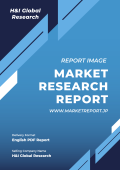1.Research Methodology
1.1.Desk Research
1.2.Real time insights and validation
1.3.Forecast model
1.4.Assumptions and forecast parameters
1.5.Market size estimation
1.5.1.Top-down approach
1.5.2.Bottom-up approach
2.Report Scope
2.1.Market definition
2.2.Key objectives of the study
2.3.Report overview
2.4.Market segmentation
2.5.Overview of the impact of COVID-19 on global silk market
3.Executive Summary
4.Market Overview
4.1.Introduction
4.2.Growth impact forces
4.2.1.Drivers
4.2.2.Restraints
4.2.3.Opportunities
4.3.Market value chain analysis
4.3.1.List of raw material suppliers
4.3.2.List of manufacturers
4.3.3.List of distributors
4.4.Innovation & sustainability matrices
4.4.1.Technology matrix
4.4.2.Regulatory matrix
4.5.Porter’s five forces analysis
4.5.1.Bargaining power of suppliers
4.5.2.Bargaining power of consumers
4.5.3.Threat of substitutes
4.5.4.Threat of new entrants
4.5.5.Competitive rivalry intensity
4.6.PESTLE analysis
4.6.1.Political
4.6.2.Economical
4.6.3.Social
4.6.4.Technological
4.6.5.Environmental
4.7.Impact of COVID-19 on silk market
4.7.1.Pre-covid market scenario
4.7.2.Post-covid market scenario
5.Silk Market Analysis, by Type
5.1.Overview
5.2.Mulberry silk
5.2.1.Definition, key trends, growth factors, and opportunities
5.2.2.Market size analysis, by region
5.2.3.Market share analysis, by country
5.3.Tussar silk
5.3.1.Definition, key trends, growth factors, and opportunities
5.3.2.Market size analysis, by region
5.3.3.Market share analysis, by country
5.4.Eri silk
5.4.1.Definition, key trends, growth factors, and opportunities
5.4.2.Market size analysis, by region
5.4.3.Market share analysis, by country
5.5.Others
5.5.1.Definition, key trends, growth factors, and opportunities
5.5.2.Market size analysis, by region
5.5.3.Market share analysis, by country
5.6.Research Dive Exclusive Insights
5.6.1.Market attractiveness
5.6.2.Competition heatmap
6.Silk Market Analysis, by End User
6.1.Textile
6.1.1.Definition, key trends, growth factors, and opportunities
6.1.2.Market size analysis, by region
6.1.3.Market share analysis, by country
6.2.Cosmetics & Medicals
6.2.1.Definition, key trends, growth factors, and opportunities
6.2.2.Market size analysis, by region
6.2.3.Market share analysis, by country
6.3.Research Dive Exclusive Insights
6.3.1.Market attractiveness
6.3.2.Competition heatmap
7.Silk Market, by Region
7.1.North America
7.1.1.U.S.
7.1.1.1.Market size analysis, by Type
7.1.1.2.Market size analysis, by End User
7.1.2.Canada
7.1.2.1.Market size analysis, by Type
7.1.2.2.Market size analysis, by End User
7.1.3.Mexico
7.1.3.1.Market size analysis, by Type
7.1.3.2.Market size analysis, by End User
7.1.4.Research Dive Exclusive Insights
7.1.4.1.Market attractiveness
7.1.4.2.Competition heatmap
7.2.Europe
7.2.1.Germany
7.2.1.1.Market size analysis, by Type
7.2.1.2.Market size analysis, by End User
7.2.2.UK
7.2.2.1.Market size analysis, by Type
7.2.2.2.Market size analysis, by End User
7.2.3.France
7.2.3.1.Market size analysis, by Type
7.2.3.2.Market size analysis, by End User
7.2.4.Spain
7.2.4.1.Market size analysis, by Type
7.2.4.2.Market size analysis, by End User
7.2.5.Italy
7.2.5.1.Market size analysis, by Type
7.2.5.2.Market size analysis, by End User
7.2.6.Rest of Europe
7.2.6.1.Market size analysis, by Type
7.2.6.2.Market size analysis, by End User
7.2.7.Research Dive Exclusive Insights
7.2.7.1.Market attractiveness
7.2.7.2.Competition heatmap
7.3.Asia Pacific
7.3.1.China
7.3.1.1.Market size analysis, by Type
7.3.1.2.Market size analysis, by End User
7.3.2.Japan
7.3.2.1.Market size analysis, by Type
7.3.2.2.Market size analysis, by End User
7.3.3.India
7.3.3.1.Market size analysis, by Type
7.3.3.2.Market size analysis, by End User
7.3.4.Australia
7.3.4.1.Market size analysis, by Type
7.3.4.2.Market size analysis, by End User
7.3.5.South Korea
7.3.5.1.Market size analysis, by Type
7.3.5.2.Market size analysis, by End User
7.3.6.Rest of Asia Pacific
7.3.6.1.Market size analysis, by Type
7.3.6.2.Market size analysis, by End User
7.3.7.Research Dive Exclusive Insights
7.3.7.1.Market attractiveness
7.3.7.2.Competition heatmap
7.4.LAMEA
7.4.1.Brazil
7.4.1.1.Market size analysis, by Type
7.4.1.2.Market size analysis, by End User
7.4.2.Saudi Arabia
7.4.2.1.Market size analysis, by Type
7.4.2.2.Market size analysis, by End User
7.4.3.UAE
7.4.3.1.Market size analysis, by Type
7.4.3.2.Market size analysis, by End User
7.4.4.South Africa
7.4.4.1.Market size analysis, by Type
7.4.4.2.Market size analysis, by End User
7.4.5.Rest of LAMEA
7.4.5.1.Market size analysis, by Type
7.4.5.2.Market size analysis, by End User
7.4.6.Research Dive Exclusive Insights
7.4.6.1.Market attractiveness
7.4.6.2.Competition heatmap
8.Competitive Landscape
8.1.Top winning strategies, 2021
8.1.1.By strategy
8.1.2.By year
8.2.Strategic overview
8.3.Market share analysis, 2021
9.Company Profiles
9.1.Anhui Silk Co.Ltd
9.1.1.Overview
9.1.2.Business segments
9.1.3.Product portfolio
9.1.4.Financial performance
9.1.5.Recent developments
9.1.6.SWOT analysis
9.1.7.Research Dive Analyst View
9.2.AMSilk GmbH
9.2.1.Overview
9.2.2.Business segments
9.2.3.Product portfolio
9.2.4.Financial performance
9.2.5.Recent developments
9.2.6.SWOT analysis
9.2.7.Research Dive Analyst View
9.3.EntoGenetics Inc
9.3.1.Overview
9.3.2.Business segments
9.3.3.Product portfolio
9.3.4.Financial performance
9.3.5.Recent developments
9.3.6.SWOT analysis
9.3.7.Research Dive Analyst View
9.4.Bolt Threads
9.4.1.Overview
9.4.2.Business segments
9.4.3.Product portfolio
9.4.4.Financial performance
9.4.5.Recent developments
9.4.6.SWOT analysis
9.4.7.Research Dive Analyst View
9.5.Sichuan Nanchong Liuhe (Group) Corp
9.5.1.Overview
9.5.2.Business segments
9.5.3.Product portfolio
9.5.4.Financial performance
9.5.5.Recent developments
9.5.6.SWOT analysis
9.5.7.Research Dive Analyst View
9.6.China Silk Group Co.Ltd
9.6.1.Overview
9.6.2.Business segments
9.6.3.Product portfolio
9.6.4.Financial performance
9.6.5.Recent developments
9.6.6.SWOT analysis
9.6.7.Research Dive Analyst View
9.7.Zhejiang Jiaxin Silk Co.Ltd.
9.7.1.Overview
9.7.2.Business segments
9.7.3.Product portfolio
9.7.4.Financial performance
9.7.5.Recent developments
9.7.6.SWOT analysis
9.7.7.Research Dive Analyst View
9.8.Xuzhou Shengkun Silk Manufacturing Co.Ltd
9.8.1.Overview
9.8.2.Business segments
9.8.3.Product portfolio
9.8.4.Financial performance
9.8.5.Recent developments
9.8.6.SWOT analysis
9.8.7.Research Dive Analyst View
9.9.Spiber Technologies
9.9.1.Overview
9.9.2.Business segments
9.9.3.Product portfolio
9.9.4.Financial performance
9.9.5.Recent developments
9.9.6.SWOT analysis
9.9.7.Research Dive Analyst View
9.10.Libas Textiles Ltd
9.10.1.Overview
9.10.2.Business segments
9.10.3.Product portfolio
9.10.4.Financial performance
9.10.5.Recent developments
9.10.6.SWOT analysis
9.10.7.Research Dive Analyst View
*** 免責事項 ***
https://www.globalresearch.co.jp/disclaimer/











